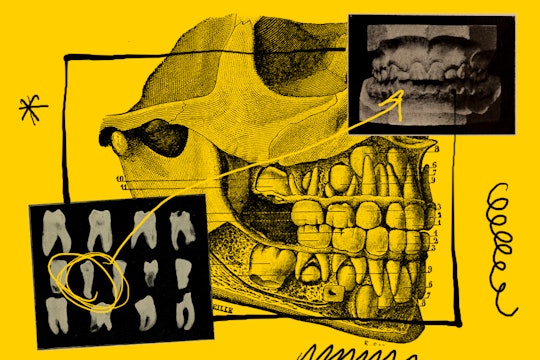
Allan Lasser
The history of humanity is written across your smile
'The Tales Teeth Tell' traces the evolution of our teeth into "oral Swiss army knives"
People don’t often stop to consider the clues their teeth hold about their past, from a person’s evolutionary ancestors, to their diet, to their cultural group or where they grew up. But a new book by anthropologist Dr. Tanya M. Smith, The Tales Teeth Tell, unlocks the secrets hidden within our teeth (and those of our primate cousins and ancestors), and describes the centuries-long scientific journey into using them to understand our origins and ourselves.
.jpg)
MIT Press
The Tales Teeth Tell builds on centuries of scholarship, both in the areas of paleoanthropology – the study of human origins and evolution - and microscopy. Smith examines the fundamentals of the cellular biology of teeth, including how they are formed and the biological rhythms that govern and create their structure (allowing them to be the human equivalent of tree rings, at least during childhood); how our teeth evolved into what they are today – an “oral Swiss army knife,” as Smith writes, capable of chomping and grinding all kinds of different foods; and how we modify our teeth during life, knowingly and unknowingly. She also considers what the future of teeth will look like, both in terms of evolution and biotechnological advances, like growing replacement teeth with stem cells.
By the end of her tooth-centric tour through childhood, the distant past, and modern cultures, Smith will have convinced you that your teeth are time machines.
With the aid of increasingly powerful and non-destructive methods of looking at the microscopic structures inside of teeth, Smith works on the cutting edge of dental anthropology, a field that dates back to Charles Darwin's writings about the evolution of human canine teeth. And she weaves her personal experiences into the book’s narrative, from her first experience with microscopy as an undergraduate to being sent the first baby tooth lost by an old friend's son whose delivery she had attended.
In many ways, Smith’s story fits with those of many paleontologists. She wants to see things that no one else has and use them to shed a light on what makes us human. Anthropologists that specialize in skeletal anatomy often focus on one area of the body – either above the neck, on the skull and teeth, or below it, on what we call the postcranial skeleton. In the interest of full disclosure, I should say I'm a postcranial anatomist. I did my PhD on the internal structure of the primate hip bone and have never been particularly fond of jaws and teeth, in spite of their prevalence in the human fossil record. (Which, after reading this book, you will know is due to the fact that tooth enamel is the hardest substance in the human body.) After reading it, I felt a certain kinship with the author when she described the process of staring at a computer screen at the microscopic structures that illuminate our personal development and evolutionary history, because I did the same thing for my PhD.
Along with personal moments of discovery, another of The Tales Teeth Tell’s strengths is a clear, concise description of scientific methods: the nitty-gritty details of microscopy that allow Smith to read the history of a tooth; the various methods currently used by paleoanthropologists to decipher hominid diets; and some of the more arcane techniques paleontologists use to date teeth when the standard ones can't be carried out. Without an understanding of the process behind the results, science (as a discipline) can seem inscrutable and complicated. Smith's explanations, along with her genuine enthusiasm for microscopy, work to counter this perception.
In a time when people are more interested than ever in where they came from, The Tales Teeth Tell gives readers a way to look beyond a DNA cheek swab for information about their pasts, both recent and deep. One of the best records of their personal development and evolutionary history is inside of their mouths in the form of their own teeth, if they care to take a look in the mirror.
